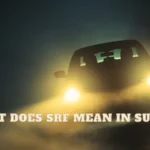The coolant temp sensor is critical to engine performance. An increase in the temperature of an engine causes the sensor resistance to drop, and vice versa. Higher temperatures would generally decrease the resistance between the two channels. The coolant/antifreeze keeps your car engine at the right temperature. The coolant temp sensor not only corrects anomalies. It also knows when the engine is operating at its right or wrong temp.
But do you know you can bypass the coolant temp sensor? How? Then follow me as I walk you through the process. You’ll also learn a few other things.
What is Coolant Temperature Sensor and how does it work?
The coolant temperature functions as an engine management sensor. This is why it’s also called the engine coolant temperature switch (ECTS). It helps to keep track of the temperature of your car’s engine’s coolant. As temp changes, the coolant temperature sensor varies the voltage out. It works as a thermistor or a resistor that signals and transmits power.
This sensor measures the temperature of coolant/antifreeze in the cooling system. It also continually monitors coolant temperature, along with the vehicle’s ECU (Engine Control Unit). Thus, it makes sure that the engine is operating at the optimal temperature.
The Coolant Temperature Sensors work using electrical resistance to measure the temp of the coolant. In other words, it gives an idea of how much heat is coming from the engine. It sends a signal to the computer to initiate changes to major components of the engine. The timing, On/Off Switch, electrical fan and fuel injection/calculations perform optimally. Don’t forget, the engine requires more fuel when they are cold and less fuel when they are fully warmed up.
Inside the Coolant temperature sensor (CTS) is a Negative Temperature Coefficient (NTC). The NTC features a variable resistor called a thermistor. As the engine temperature starts to go up, the resistance measured value in the sensor starts to go down. The voltage reading and the performance of the ECU will drop as well. The CTS also features the Positive Temperature Coefficient that operates in the opposite way. In other words, the temperature goes up the resistance value goes up.
Steps to Bypass the Coolant Temperature Sensor
My question is why do you want to bypass the coolant temperature sensor, as it plays a major role in your car? It’ll be advisable to consult an auto mechanic or seek professional help if your CTS is faulty. From experience, it is not advisable to bypass the coolant temperature sensor. It may incur damage to the Car engine.
If you still want to bypass the coolant temperature sensor, below are the steps:
Step 1: Remove the temperature coolant sensor. The sensor houses the thermostat located at the engine
Step 2: Unplug the wiring harness carefully. This will disconnect the sensor, the sensor-like bolt holding it together.
Step 3: Install two jumper wires as a substitute for the sensor.
Step 4: Connect one end of the wire to the ground source.
Step 5: Connect the other end to the wire harness, where you removed the sensor
Step 6: Start the engine, and check and observe the temperature gauge that displays on the dash
An accurate gauge reading means that your coolant temp bypass is successful
Step 7: Observe the engine temperature if there would be any steam coming from the hood. Any steam shows a sign of overheating.
FAQs
Can I bypass the coolant temperature sensor?
There are no hard and fast rules about it. Although it is a variable device instrument, a light coolant temp sensor can be bypassed. All you need to do is to unplug the sensor from its shell or follow the steps above. But rest assured that bypassing may void any warranty/ guarantee.
If you choose to bypass the coolant temperature sensor, you may experience some tricky end. It is a critical feature of the vehicle that prevents overheating. As I said, this process is not recommended as it’ll affect your driving experience. However, a too-difficult-to-access sensor isn’t easy to bypass.
Does the coolant temperature sensor affect my fuel?
One of the critical symptoms of a failing coolant temp sensor is increased fuel consumption. Due to an imbalance in the timing, your car’s fuel consumption increases. The overall damage is poor engine performance.
When the coolant temperature sensor is faulty it can result in all sorts of problems. The signal sent from the sensor to the engine will detect if the engine timing needs changes or not. Fuel calculations may also be affected. In a case where there is an incorrect engine temperature signal, the ECU may enrich the fuel mixture. It may extend the combustion process or make it difficult.
Can I drive with a faulty coolant temperature sensor?
Yes, you can drive with a defective coolant temperature sensor. However, it is not appropriate because there’s a danger of running your car rich. Remember, the sensor sends accurate signals to the ECU to initiate major changes and correct deviations. Without the sensor or if it’s faulty, the interaction with the computer will ineffective. Hence, the computer will unbalance the timing, thereby affecting fuel calculations.
A faulty coolant temp sensor can cause carbon buildup which in turn can cause severe damage to the vehicle. The good thing is that the sensor won’t fail without a warning.
Final Words
As I wrap up this discussion, my advice is that you should do everything possible not to bypass your coolant temp sensor. The function of this engine component is critical. The cost of replacing a coolant temp sensor is far lower than what you’ll spend on any damage it causes. Even if I’m not aware when my car is overheating, the temperature sensor knows. Once the coolant temp sensor goes out, it sends a wrong signal to the ECU. I hope you find this article helpful.



